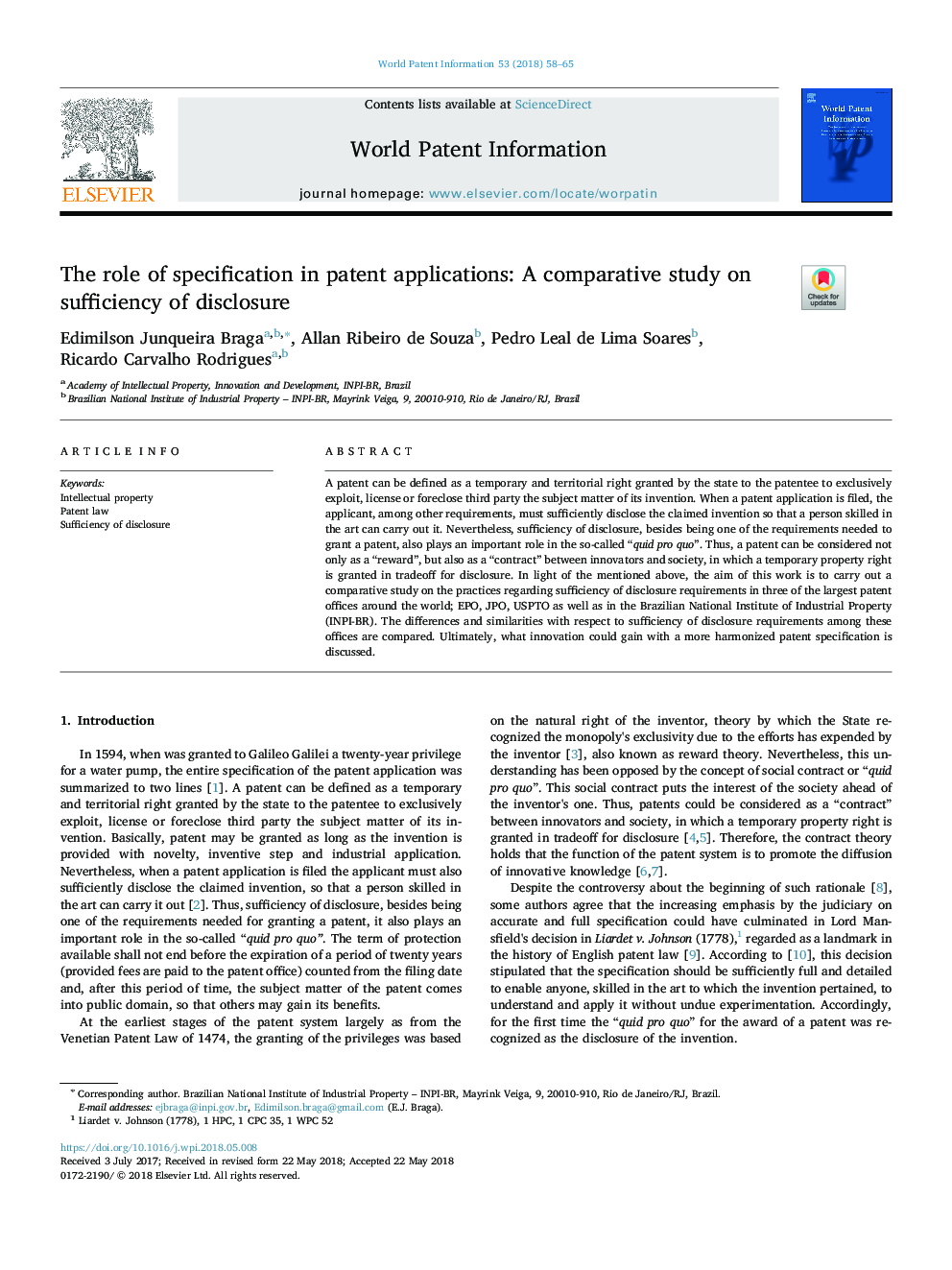| Article ID | Journal | Published Year | Pages | File Type |
|---|---|---|---|---|
| 6496238 | World Patent Information | 2018 | 8 Pages |
Abstract
A patent can be defined as a temporary and territorial right granted by the state to the patentee to exclusively exploit, license or foreclose third party the subject matter of its invention. When a patent application is filed, the applicant, among other requirements, must sufficiently disclose the claimed invention so that a person skilled in the art can carry out it. Nevertheless, sufficiency of disclosure, besides being one of the requirements needed to grant a patent, also plays an important role in the so-called “quid pro quo”. Thus, a patent can be considered not only as a “reward”, but also as a “contract” between innovators and society, in which a temporary property right is granted in tradeoff for disclosure. In light of the mentioned above, the aim of this work is to carry out a comparative study on the practices regarding sufficiency of disclosure requirements in three of the largest patent offices around the world; EPO, JPO, USPTO as well as in the Brazilian National Institute of Industrial Property (INPI-BR). The differences and similarities with respect to sufficiency of disclosure requirements among these offices are compared. Ultimately, what innovation could gain with a more harmonized patent specification is discussed.
Keywords
Related Topics
Physical Sciences and Engineering
Chemical Engineering
Bioengineering
Authors
Edimilson Junqueira Braga, Allan Ribeiro de Souza, Pedro Leal de Lima Soares, Ricardo Carvalho Rodrigues,
